
Question and Answers Forum
Question Number 107729 by M±th+et+s last updated on 12/Aug/20
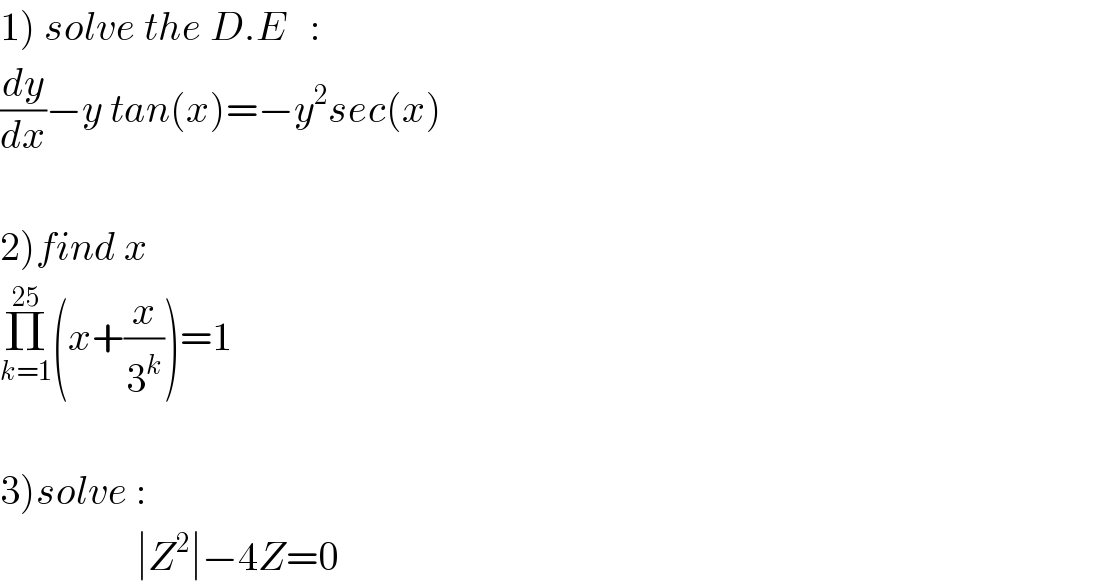
Commented by mohammad17 last updated on 12/Aug/20
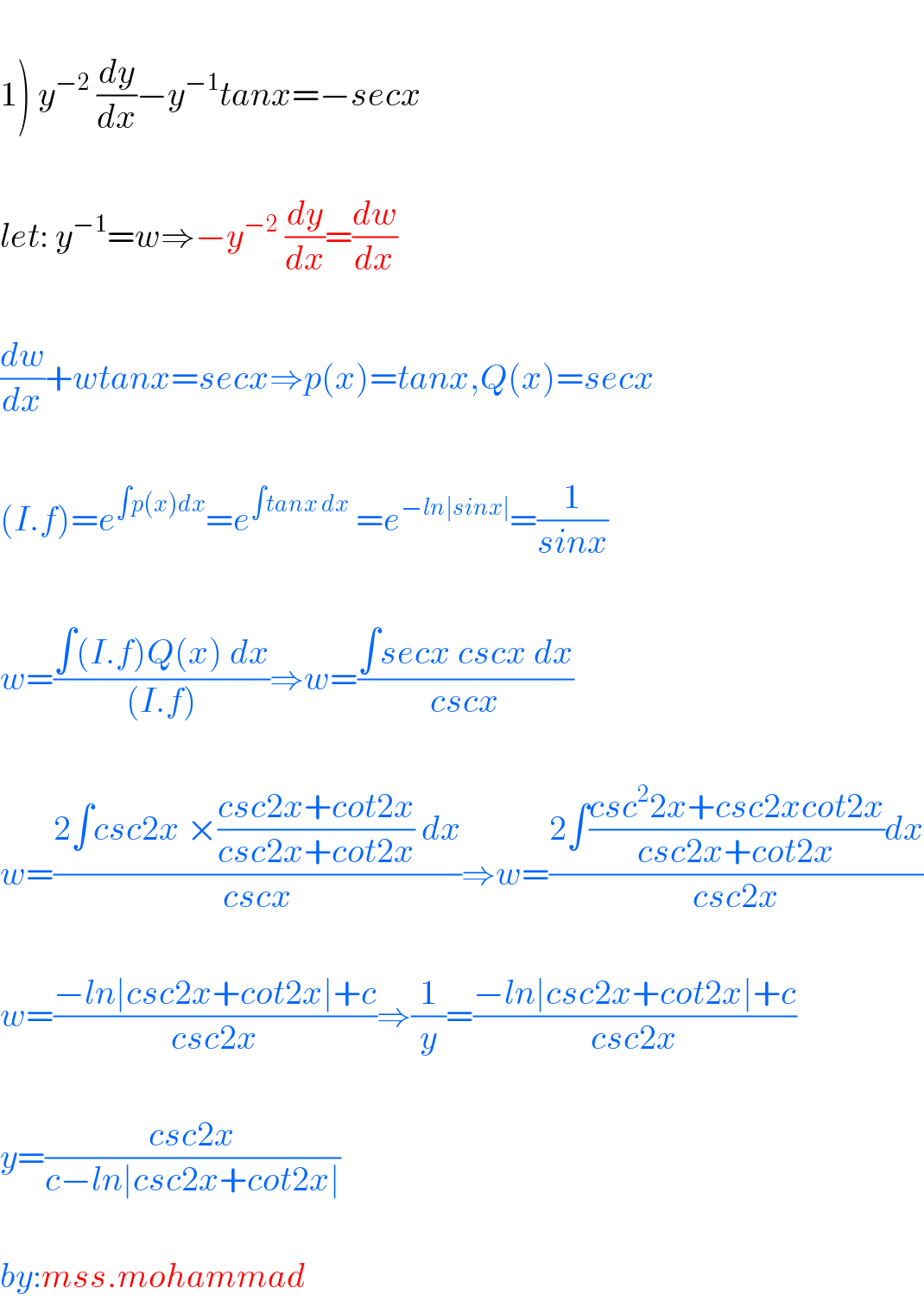
Commented by Dwaipayan Shikari last updated on 12/Aug/20
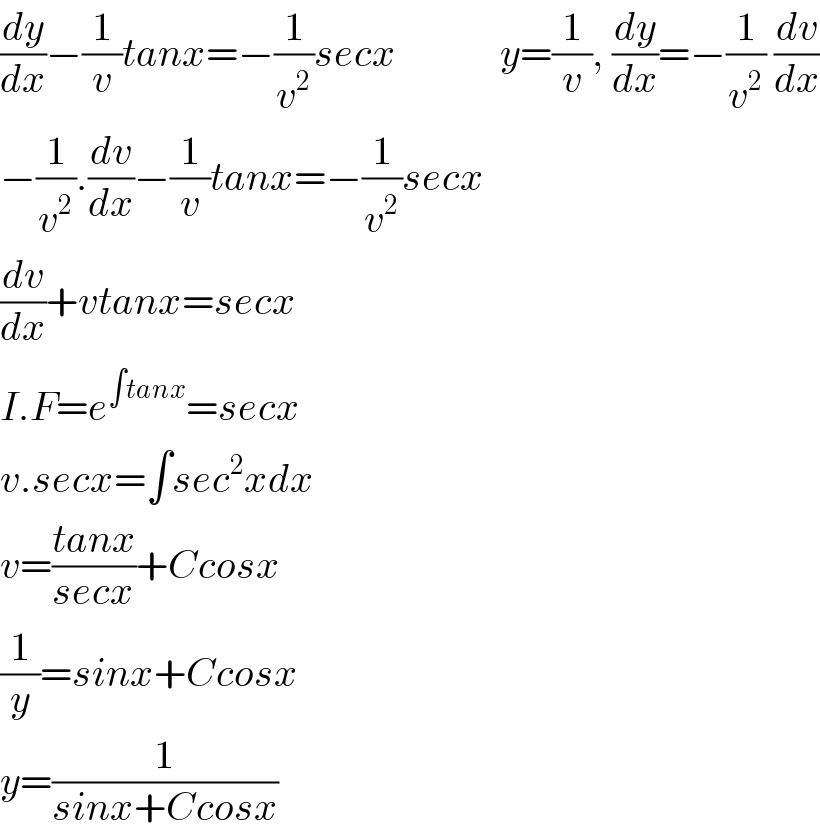
Commented by Dwaipayan Shikari last updated on 12/Aug/20
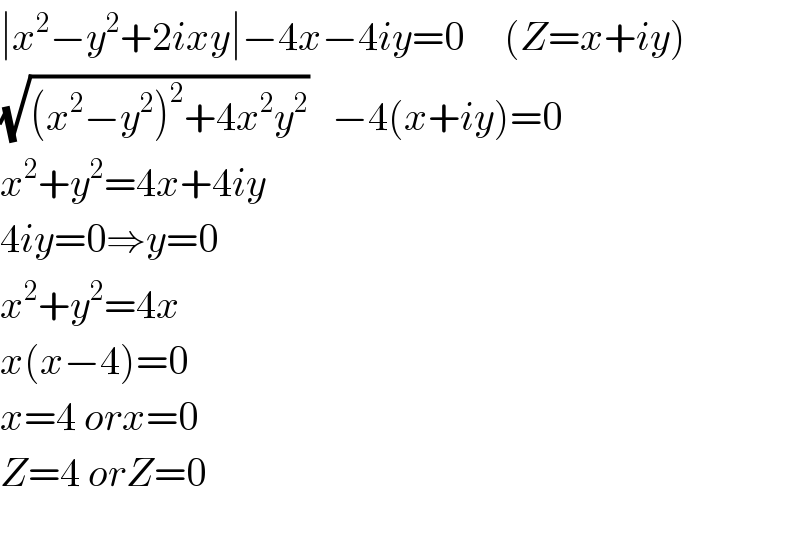
Answered by Her_Majesty last updated on 12/Aug/20
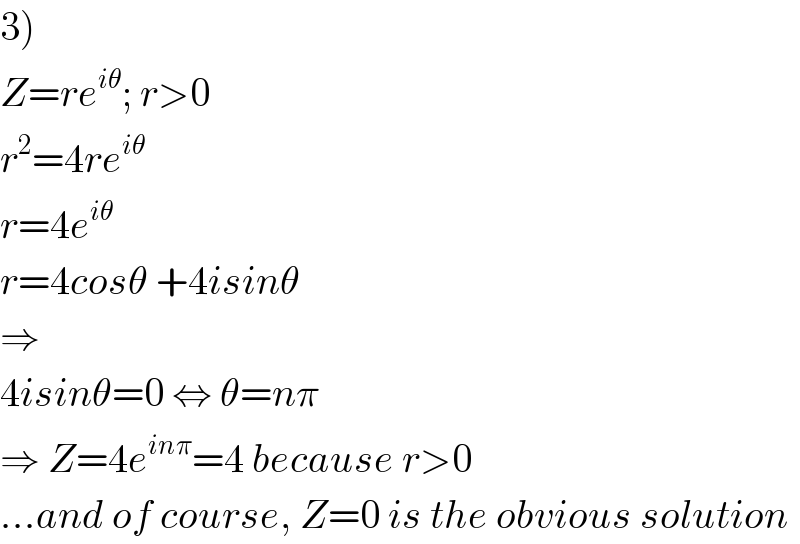
Commented by M±th+et+s last updated on 12/Aug/20

Answered by abdomathmax last updated on 12/Aug/20
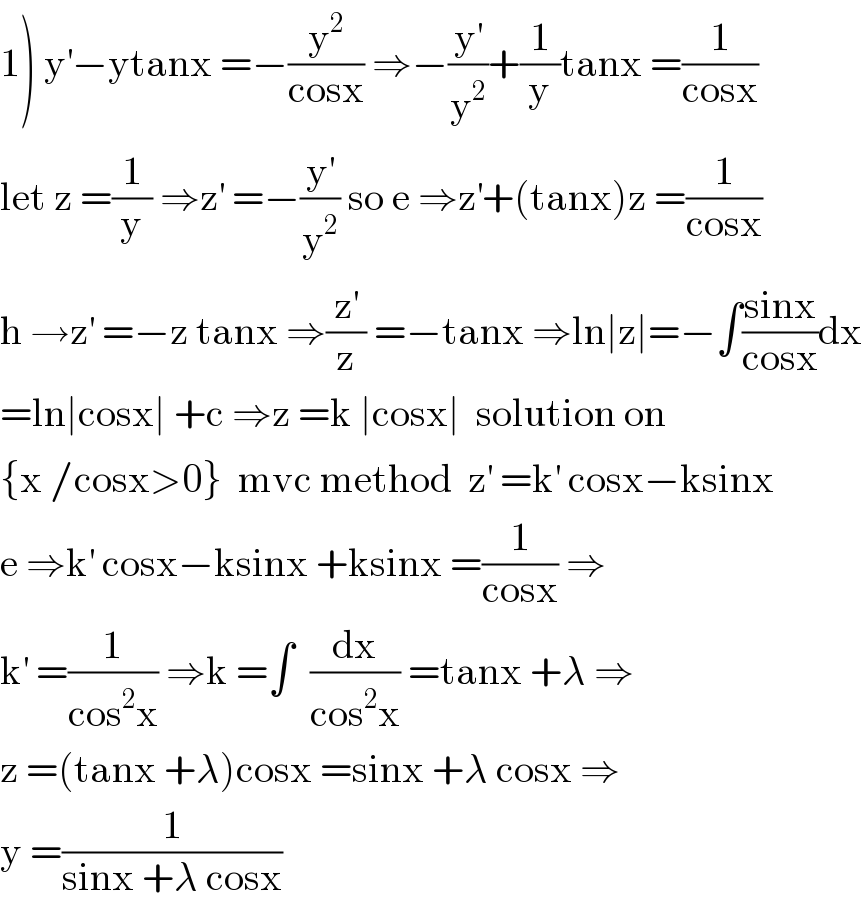
Commented by M±th+et+s last updated on 12/Aug/20

Commented by abdomathmax last updated on 12/Aug/20

Commented by Ar Brandon last updated on 12/Aug/20
Est-ce la méthode de variation de constante, monsieur ?��
Commented by abdomathmax last updated on 12/Aug/20

Commented by Ar Brandon last updated on 12/Aug/20
OK��
Commented by mohammad17 last updated on 12/Aug/20

Commented by Ar Brandon last updated on 12/Aug/20
It means variation of parameters in English.
Commented by mathmax by abdo last updated on 12/Aug/20

Commented by Ar Brandon last updated on 12/Aug/20
I would like to master the mvc and the wronskian method. But I haven't found any reliable document concerning these subjects. Can someone please help me ? ��
Commented by Ar Brandon last updated on 12/Aug/20

Answered by abdomathmax last updated on 12/Aug/20
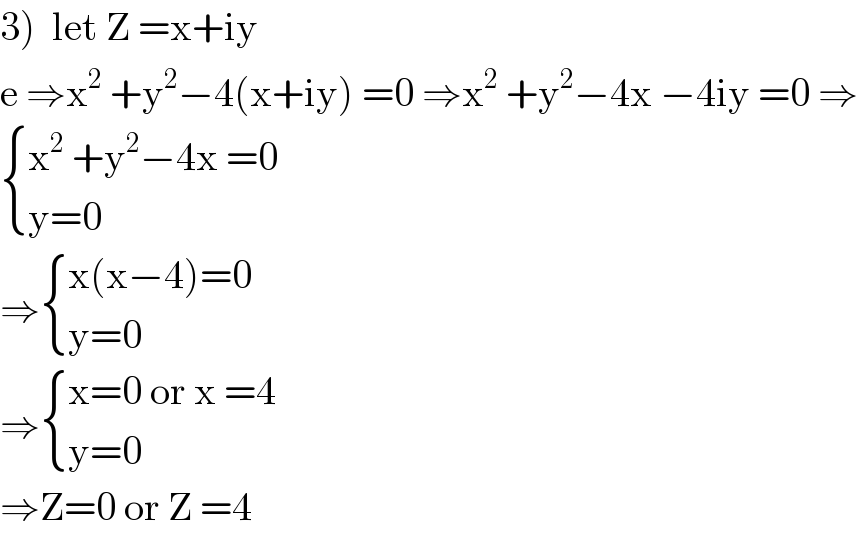
Answered by bemath last updated on 12/Aug/20
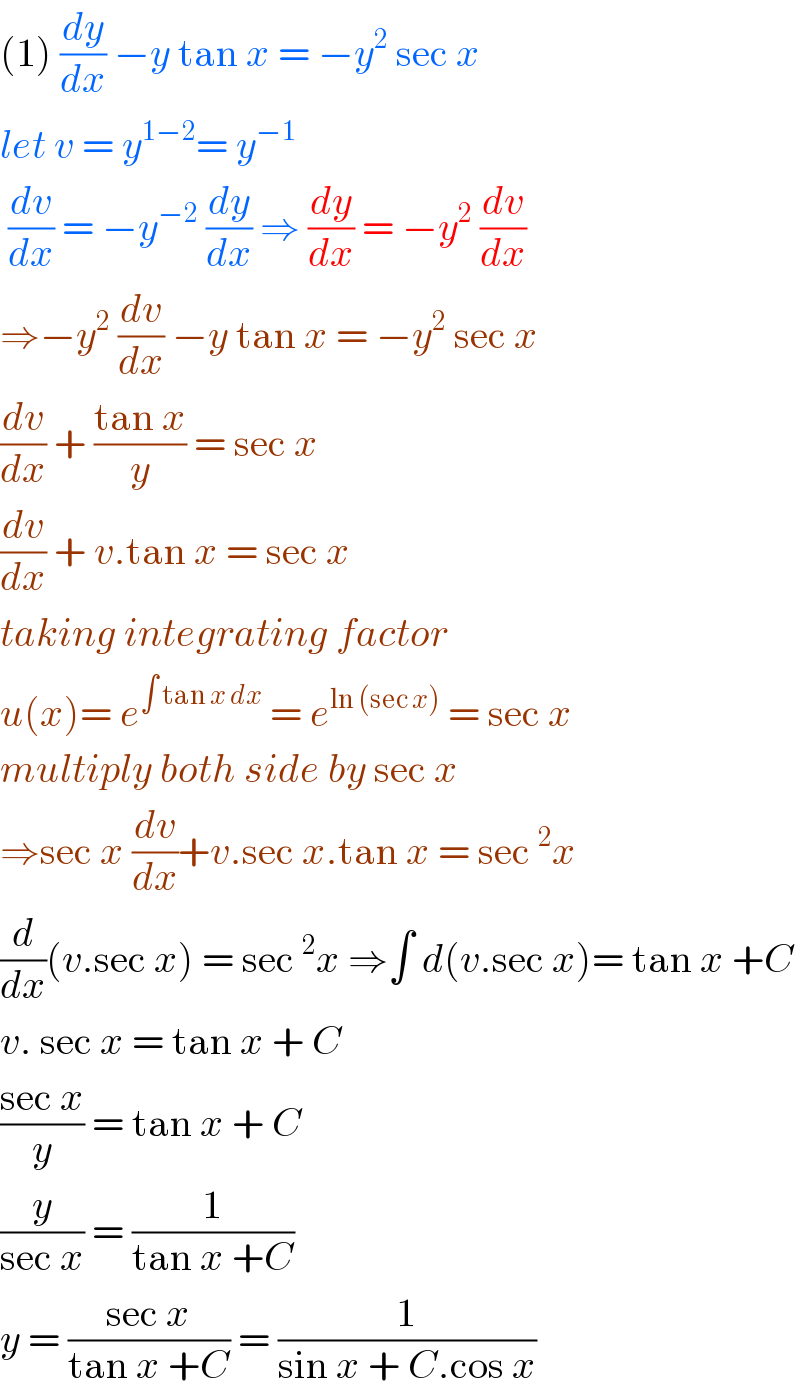
Commented by bobhans last updated on 12/Aug/20

Commented by john santu last updated on 12/Aug/20

Answered by Ar Brandon last updated on 12/Aug/20
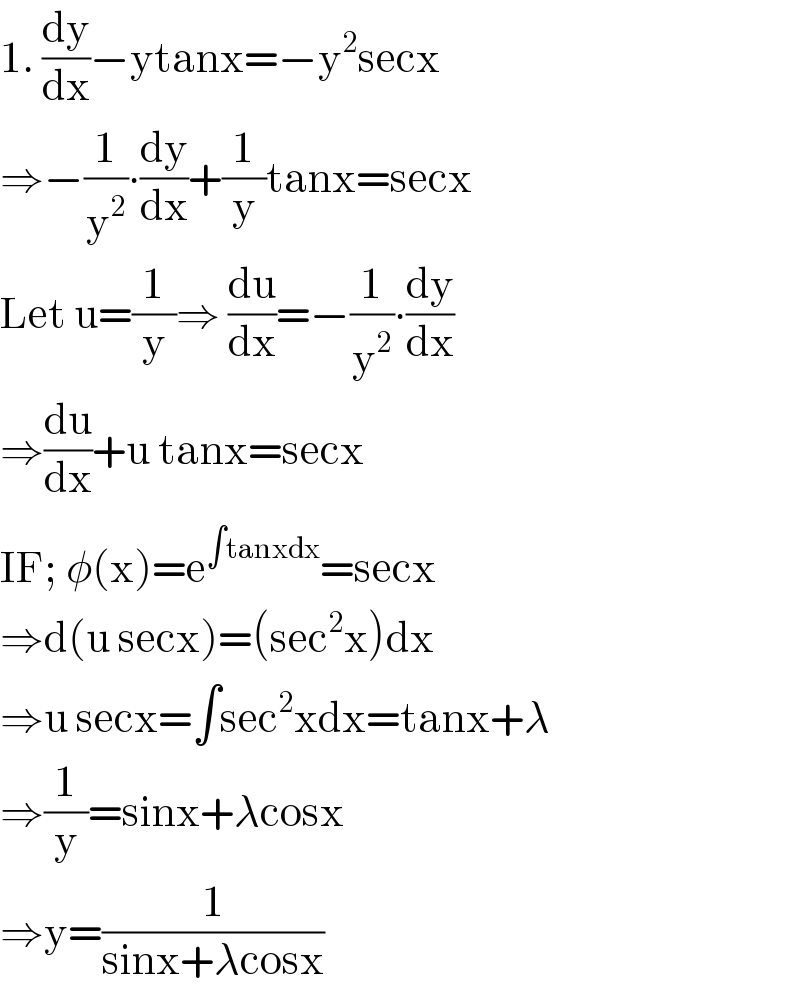
Answered by Ar Brandon last updated on 12/Aug/20
![2. Π_(k=1) ^(25) (x+(x/3^k ))=1⇒x^(25) Π_(k=1) ^(25) (1+(1/3^k ))=1 ⇒x=[Π_(k=1) ^(25) (1+(1/3^k ))]^(−(1/(25)) ) =Π_(k=1) ^(25) [1+(1/3^k )]^(−(1/(25)))](Q107848.png)
